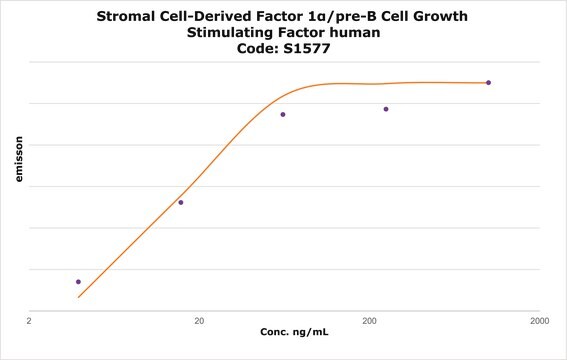V900182
Bicarbonate de sodium
Vetec™, reagent grade, 99%
Synonyme(s) :
Sodium hydrogen carbonate
About This Item
Produits recommandés
Qualité
reagent grade
Gamme de produits
Vetec™
Pureté
99%
Forme
powder
pKa (25 °C)
(1) 6.37, (2) 10.25 (carbonic acid)
Densité
2.16 g/mL at 25 °C (lit.)
Chaîne SMILES
[Na+].OC([O-])=O
InChI
1S/CH2O3.Na/c2-1(3)4;/h(H2,2,3,4);/q;+1/p-1
Clé InChI
UIIMBOGNXHQVGW-UHFFFAOYSA-M
Vous recherchez des produits similaires ? Visite Guide de comparaison des produits
Application
- Oral ulcer in SARS-CoV-2 infection: a case report: Highlights the application of sodium bicarbonate in medical diagnostics as a treatment for oral ulcers associated with viral infections, underscoring its importance in supportive care and symptom management in clinical settings (Rapp L, Lacoste-Ferré MH, 2024).
- Kumquat peel-derived biochar to support zeolitic imidazole framework-67 (ZIF-67) for enhancing peracetic acid activation to remove acetaminophen from aqueous solution: Discusses the use of sodium bicarbonate in enhancing the performance of biochar in water treatment technologies, particularly in the adsorption and breakdown of harmful organic compounds in water (Nguyen TK, Dong CD, 2024).
- A General Method to Access Underexplored Ylideneamino Sulfates as Interrupted Beckmann-Type Rearrangement Intermediates: Showcases the utility of sodium bicarbonate in organic chemistry, particularly in facilitating complex chemical reactions that are critical for pharmaceutical and material science research (Zhou Y, Jones AM, 2024).
Informations légales
Code de la classe de stockage
13 - Non Combustible Solids
Classe de danger pour l'eau (WGK)
WGK 3
Point d'éclair (°F)
Not applicable
Point d'éclair (°C)
Not applicable
Certificats d'analyse (COA)
Recherchez un Certificats d'analyse (COA) en saisissant le numéro de lot du produit. Les numéros de lot figurent sur l'étiquette du produit après les mots "Lot" ou "Batch".
Déjà en possession de ce produit ?
Retrouvez la documentation relative aux produits que vous avez récemment achetés dans la Bibliothèque de documents.
Notre équipe de scientifiques dispose d'une expérience dans tous les secteurs de la recherche, notamment en sciences de la vie, science des matériaux, synthèse chimique, chromatographie, analyse et dans de nombreux autres domaines..
Contacter notre Service technique

